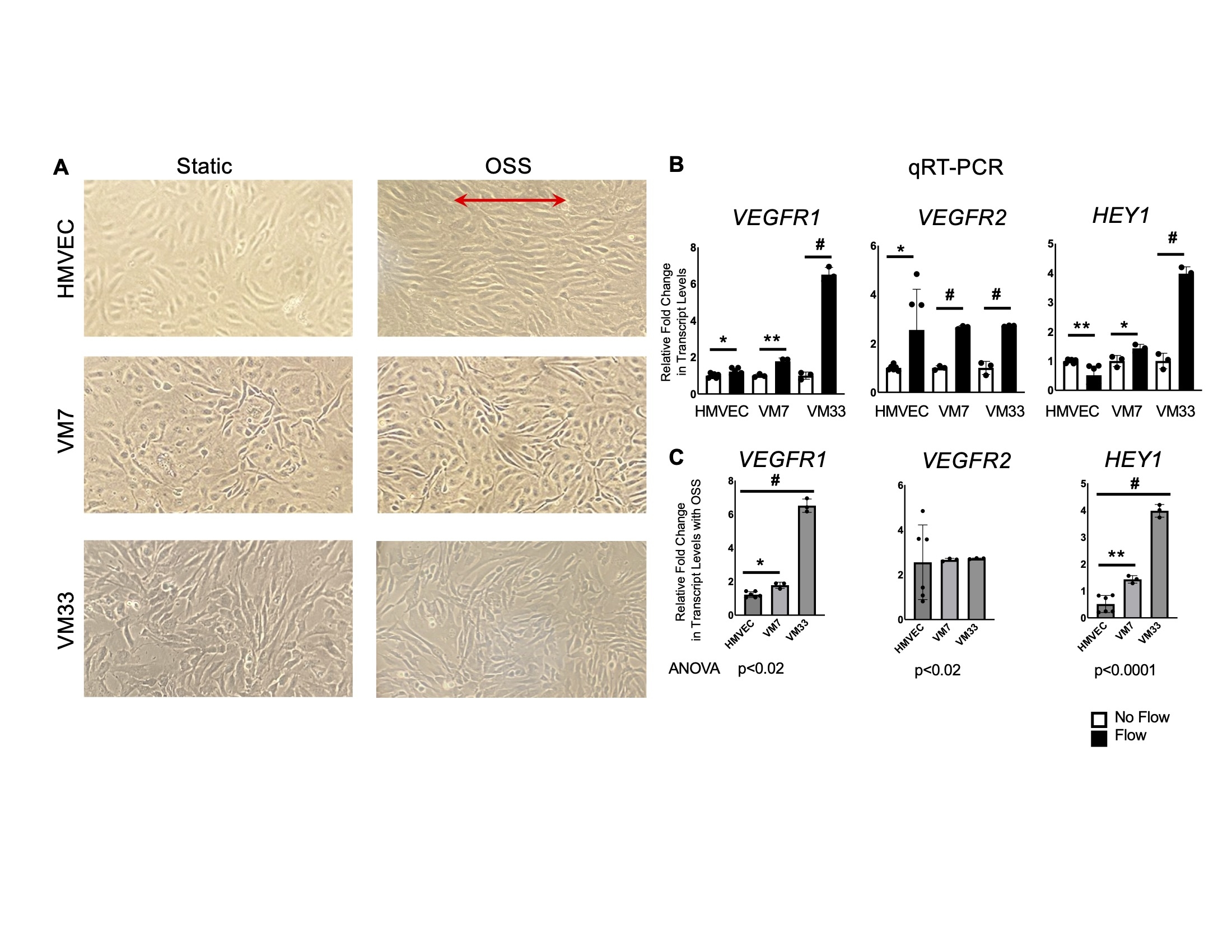Venous Malformation Endothelial Cells Differentially Respond to Oscillatory Flow
Averill Clapp*1, Samantha A. Kaplan2, Carrie J. Shawber3, June K. Wu2
1Columbia University Vagelos College of Physicians and Surgeons, New York, NY; 2Department of Surgery, Division of Plastic and Reconstructive Surgery, Columbia University Irving Medical Center, New York, NY; 3Department of Obstetrics and Gynecology, Columbia University Irving Medical Center, New York, NY
Appropriate flow sensing is essential for EC differentiation and homeostasis, and physiologic oscillatory shear stress (OSS) has been shown to promote vessel maturation and EC quiescence. Previously we and others have demonstrated that unlike normal human microvascular endothelial cells (HMVECs), venous malformation endothelial cells (VMECs) misexpress critical junctional flow-sensing proteins CD31 and VE-cadherin. We hypothesize that misexpressed junctional proteins in VMECs contribute to defective flow sensing and affect VMEC cell function.
Two patient-derived VMEC populations (VM7 with PIK3CAN345K; VM33 with TIE2L914F variant) and HMVECs were subjected to OSS for 24 hours or static conditions. RNA was isolated and qRT-PCR was performed for flow-responsive EC genes (VEGFR1, VEGFR2, HEY1). Statistical analysis was performed with student's t-test and ANOVA with post-hoc Tukey test. p < 0.05 was considered significant.
Under static conditions, HMVEC and VMEC monolayers were randomly organized (Figure 1A). Under OSS, HMVECs aligned with the direction of flow. In contrast, OSS-treated VMECs failed to align with flow. VEGFR1 and VEGFR2 transcripts were significantly increased in all OSS-treated cells relative to static-condition cells (p < 0.05, Figure 1B). VMECs in response to OSS had increased VEGFR1 transcript levels (178% and 600%) relative to HMVECs (p < 0.02, Figure 1C). HEY1 transcripts were significantly decreased in OSS-treated HVMECs (p < 0.005) but increased in OSS-treated VMECs (p < 0.05, Figure 1B).
VMECs differentially responded to flow relative to normal ECs; they did not align and demonstrated differential induction of flow-sensing genes. Further studies will be needed to understand whether differential response to flow may inhibit normal OSS-induced EC quiescence in VMECs, which may contribute to their hyperproliferative phenotype.
Figure 1. HMVECs and VMECs display differential alignment and gene expression in response to oscillatory shear stress. A) Human microvascular endothelial cells (HMVECs) and venous malformation endothelial cells (VMECs) under static conditions or oscillatory shear stress (OSS) for 24 hours. Arrows demonstrate direction of OSS. B) qRT-PCR analysis of flow-responsive EC gene expression in static- and OSS-treated cells. Individual t-tests, *p < 0.05, **p < 0.005, #p < 0.0005. C) qRT-PCR presented relative to HMVEC controls. Post-hoc Tukey tests, *p < 0.05, **p < 0.005, #p < 0.0001. Error bars represent mean ± std dev.
Back to 2023 Abstracts


